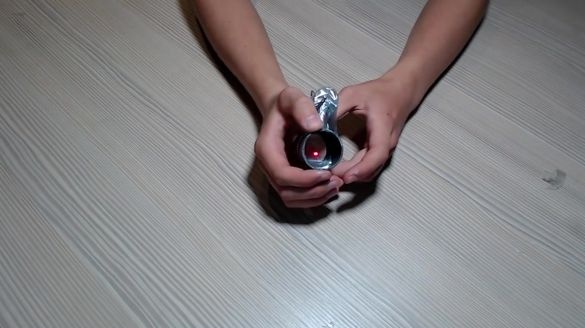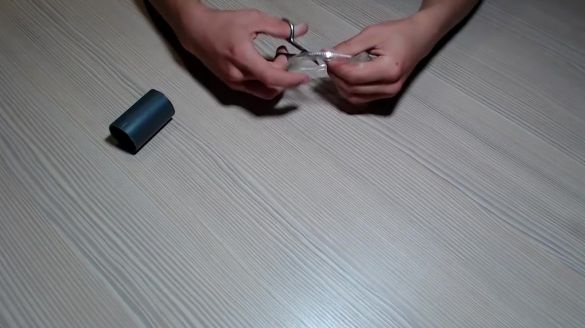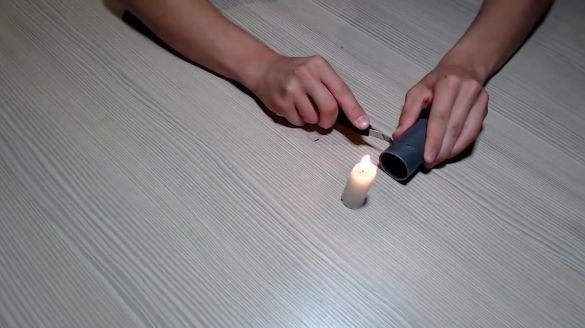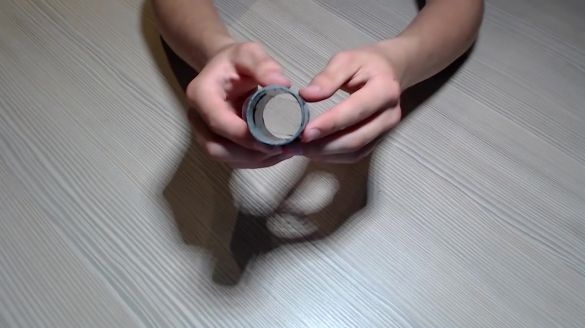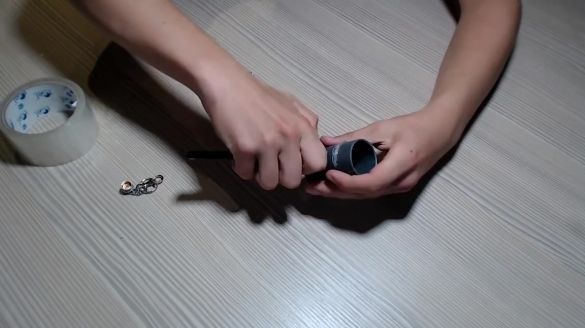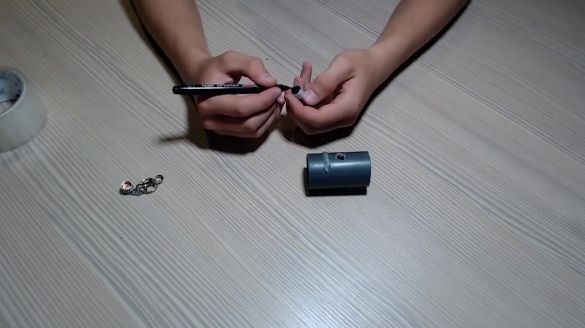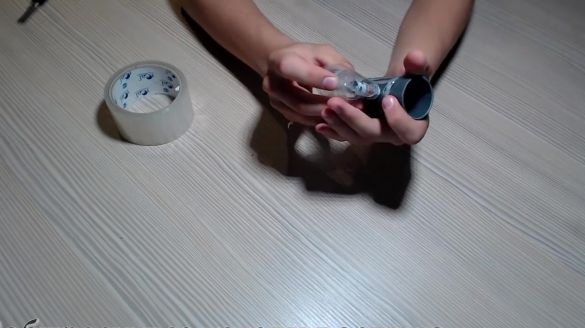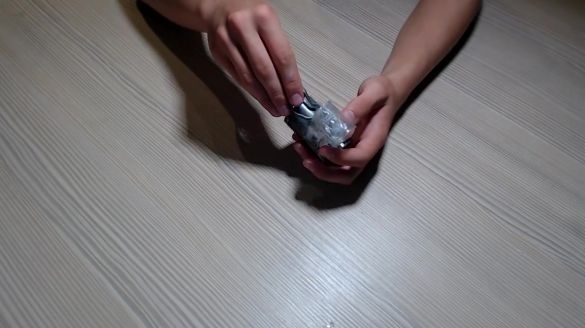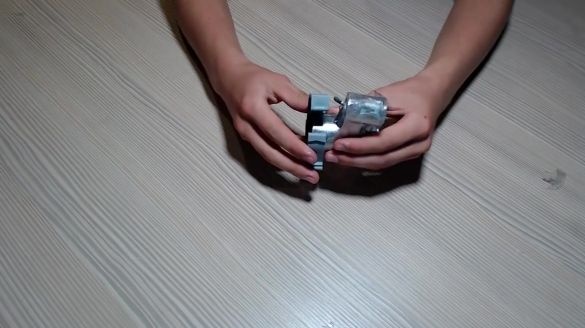We present to your attention the idea of making a collimator sight. The idea will be especially useful for those who are engaged in the independent manufacture of weapons homemade and wants to modify them.
We suggest starting with watching the author’s video
So we need:
- a piece of PVC pipe;
- laser pointer;
- stationery knife;
- a transparent cover;
- scissors.
The first step is to cut a strip from the lid so that it easily passes into the pipe.
Now we heat the clerical knife and make a hole in the pipe so that a strip passes through it, which was cut from the lid at the last step.
We make the same hole on the other hand, so that our strip fits in both holes, forming an angle of 45 degrees.
The next step is to disassemble the laser pointer and cut off the upper part, which is a battery compartment.
We fasten the batteries with tape so that they do not scatter.
We take the wire and twist it from one end, thus creating a contact for the batteries.
We assemble the laser by fixing the batteries and the wire with tape.
In the middle of the pipe we make a hole for the laser pointer.
Since the laser pointer shines very brightly, the author of the idea advises to seal it with tape and paint over with a black marker.
We install the laser pointer in the hole that we made for it, securing it with tape.
If you want the scope to work all the time, you just need to hold down the laser button.
You can proceed to painting the sight, but before that we glue the edges with masking tape. You can paint the sight with spray paint.
Note that this is just an example of how you can independently produce a collimator sight. It can be significantly modernized and improved. To make it more convenient to attach the sight to a makeshift weapons, you can use a plastic mount for PVC pipes of the appropriate diameter.

